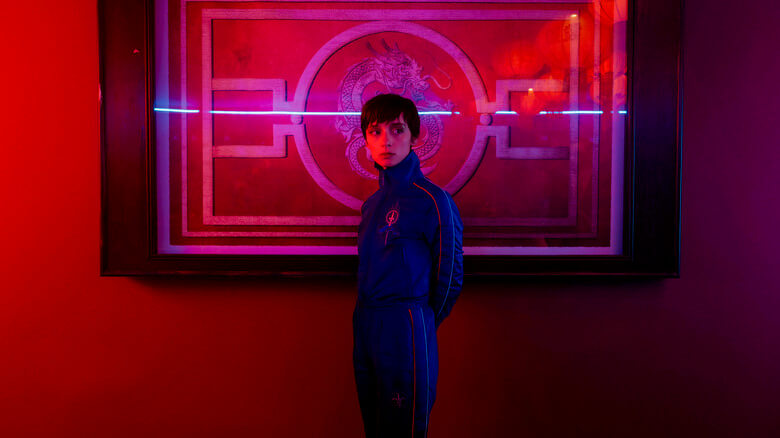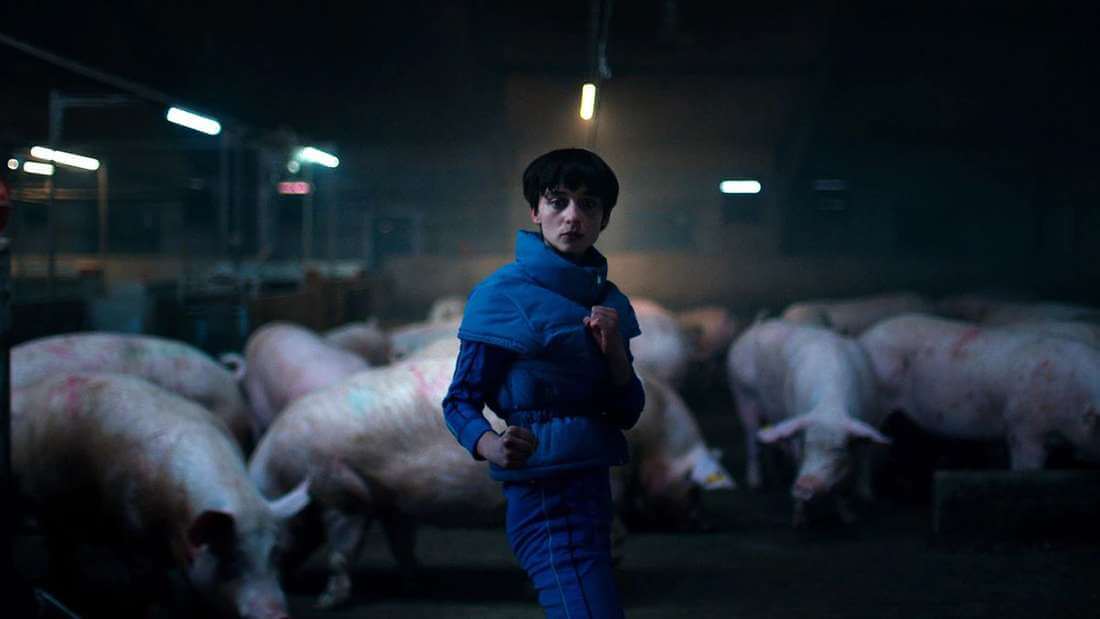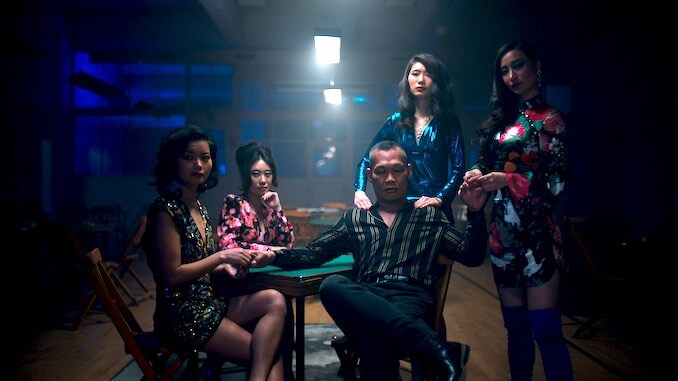COPENHAGEN COWBOY. Neon revenge [Review]

Whatever it is, there are few such figures in contemporary cinema as Nicolas Winding Refn, the creator of Pusher, Drive or Neon Demon. The Dane’s style can both delight and repel, and his behavior can be considered buffoonery as well as an uncompromising attitude of a brave artist. What no one will deny him is artistic bravado and original expressiveness. Recently, his star may have dimmed a bit, but Refn’s next projects are still something that can be eagerly awaited. Copenhagen Cowboy was no different; more interesting due to the director’s return to his native Denmark, where his first films were made, including the classic (and in my opinion his best) Pusher trilogy. Just like there, the action is again set in the criminal underworld, but this time we got a six-episode series. The most important question was – is returning to Europe also a withdrawal from the neon-camp exaggeration associated, for example, with Drive, or rather a continuation of the last few works in a different setting?
Copenhagen Cowboy is the second series in Refn’s filmography. His last cinema production (Neon Demon) premiered in 2016, and the direct predecessor of the new work was Too Old to Die – a monumental, original series shot for Amazon, which is the quintessence of the unbridled, over-aesthetized and symbolic Danish style (I, having ambivalent attitude towards this convention, I have not yet gone through the whole thing). So it seems that NWR has settled into a more relaxed, longer-length episode narrative convention, moving to Netflix this time. In terms of structure, Copenhagen Cowboy is a clearly coherent whole, with the dramaturgy constructed in the perspective of a six-hour dimension, where individual episodes should be treated as chapters bringing minor climaxes, working to create an overall impression. In this respect, it is clear that Refn feels the form of the series and knows what he is doing, allowing himself a measured pace, without unnecessary looking at cliffhangers or each episode ticking off the exposition and catching his breath.

However, around the middle of the series, one wonders if the story should really fill such an extensive frame (six episodes, each about 50 minutes long, is still significantly more than the average cinema film). The story of Copenhagen Cowboy focuses on the titular girl endowed with supernatural abilities. They are not fully explained, but the androgynous Miu has clear psychic abilities that both she and those around her are aware of. We get to know it when it is used as a living amulet, partly a servant, partly an element of interior design, whose task is to ensure the success of the plans of the “owners”. The series shows her a path to take revenge on those who hurt her and whose actions cast a shadow on her life. With this motivation, Miu begins a dreamlike, supernatural journey through the multicultural Copenhagen underworld. Involved in criminal intrigues, gang fights and ambiguous relationships, Miu pursues her goal with a straight face until it reaches a spectacular climax.
Answering the question posed in the introduction – Copenhagen Cowboy is 100% Refn essence when it comes to stylistic bloating. It is true that in the first acts of the series he still flirts a bit with a rougher, slightly subdued texture reminiscent of Pushers or Bronson, but the further into the plot, the more he unleashes a visual and narrative orgy, creating a meandering, full of visionary elements and overly stylized shots. The director thus reproduces the proven (and to be honest, increasingly used) formula that has characterized his cinema since moving to the USA in the second decade of the 21st century. In this convention, the plot is only a vehicle for the symbols drawn with a flourish and solemnity (of course, we have here an existential decline, the amorality of revenge and disintegrating social roles after being inflated to the extreme – what Refn stubbornly treats us with in basically all his stories), which framed they are in a spectacular form that is an end in itself.

In terms of the author’s poetics, the Dane does not move a millimeter from the place where he froze a decade ago, offering a kind of remix of “refnova”, only seemingly superimposed on a new story and characters. A certain novelty in this puzzle is Miu – escaping simple classifications (characterized as a frail tomboy, Angela Bundalovic is in a way the opposite of Elle Fanning from Neon Demon, subverting the image of femininity to an equally apparent degree), but in the extravagant story she seems to be more of a lockpick that triggers the original departures rather than a solidly constituted figure. The most breath-taking feature is the appearance of early NWR movie star Zlatko Burić, playing a variation on the Serbian boss from Pusher. In his scenes, we get a substitute for a more balanced, existential exposition, but these are only stops along the way of Refn’s “inspired” vision.
Heading to the conclusion, Copenhagen Cowboy is a tiresome show – the story is suffocated by the obtrusively unreal filter imposed on the plot, individual sequences seem to drag on relentlessly, the supernatural elements are more of a pretext for visual orgies than something qualitatively breaking the probability. Those whom Refn previously seduced with its campy-vision style will find some good here – it must be said that the individual sequences are beautiful. However, even taking into account that the specific style of the Danish artist is somewhat divisive by definition, there is little formal panache here, which his films used to have. It may even seem that the return to streaming premieres in episodes is not so much a desire for the author’s freedom of storytelling, but rather artistic stagnation, which throws him out of competitions in Cannes or Venice towards a circulation that flies past the radar of the most important laurels. After all, Copenhagen Cowboy is another episode of the Refnov manner, which with each incarnation seems to become more and more generic and immersed in the self-admiration of the artist with the initials NWR, creating his film greatness. Whatever you like, I believe that every performance should end sometime.

